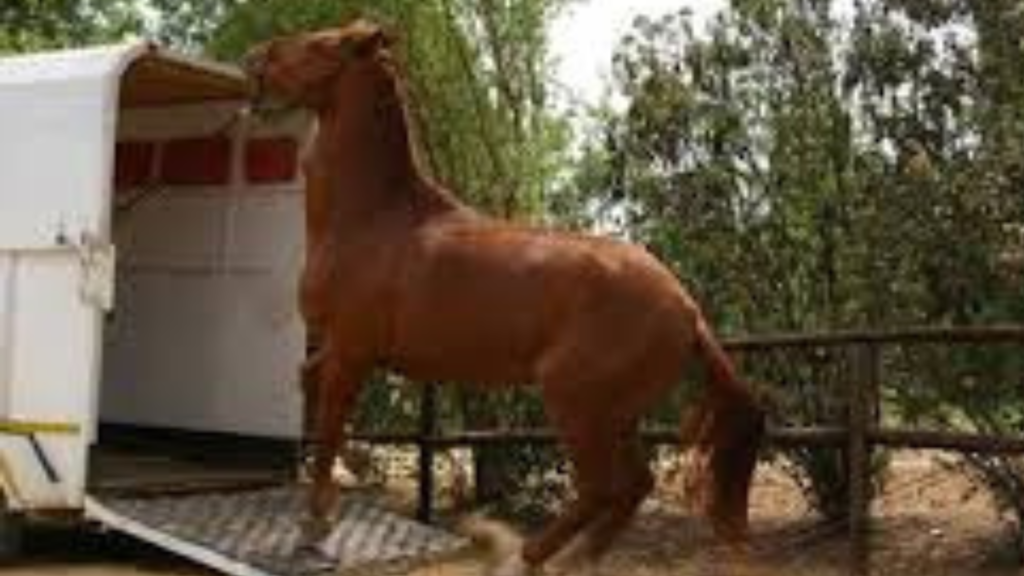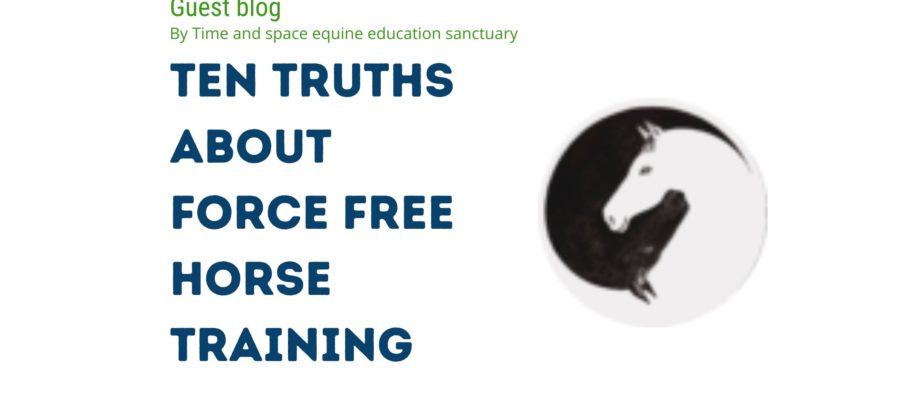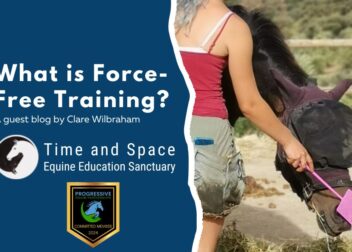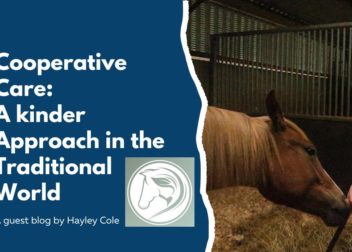Ten Truths About Force Free Horse Training
Ten Truths About Force Free Horse Training
We’ve been working on explaining the things that need to be true for us to have happy horses trained without force.
These are our top 10!
1. To feel safe and contented, our horses and ponies need to have continuous access to an appropriate source of forage, be in a healthy body condition, have freedom of movement, consistent company of friends and be living in familiar, calm surroundings.

2. Our horses will thrive when provided with an enriching environment where they have a variety of types and sources of forage and can perform natural foraging and social behaviours with other horses of similar age and temperament. Those would include play, grazing together, mutual grooming and watching out for each other when resting.
3. All the behaviours that are necessary for our horses’ emotional, mental and physical health can be learned without them experiencing any fear, and without the use of pressure, coercion, restraint, confinement, correction or force.
4. Horses need to be unconfined and unrestrained, and free from pain, discomfort, anxiety, irritation and frustration in order to be in a relaxed emotional state for learning.
5. Having a way to express their choice is empowering for the horse, and choice is the foundation stone of trust. Learning how to teach horses to express their preferences and choice without showing avoidance is also immensely empowering for us as horse lovers.
A horse or pony who feels she has the option to say “no” is more likely to say “yes” to the essential things we need her to do for her own health and welfare, as well as those things that are for our own pleasure and enjoyment as owners.
6. All animals on the planet learn what behaviour “works” for them when they experience consequences. They will act to get things they like or value and that bring them enjoyment and pleasure, or to escape or avoid things they find painful, frightening, frustration, annoying or uncomfortable.
There are only two ways to train repeatable behaviour and get it on cue.
The first of these is when the horse learns to associate a stimulus with something unpleasant, and they will in future act to avoid it. Or when they associate a stimulus with something pleasurable, and they will act to gain it. Once a horse realises that your car appearing on the yard means that you will soon be bringing them hay, they may come to the field gate or hay station so as to be ready to receive it. If a horse discovers that the vet means he might get an injection he may move to the back of the stable or pull away. The car is the cue to approach, the vet is the cue to avoid.
The second way to train behaviours so that we can reproduce them – get them on cue – is reinforcement.
We have two options for using reinforcement. Positive reinforcement – the gain or addition of something attractive and pleasurable, and negative reinforcement – the removal, reduction, escape or avoidance of something unpleasant. If the horse believes her behaviour will result in something pleasurable, she will repeat it. If his behaviour is prompted by the horse experiencing something unpleasant, and his behaviour results in escape from that unpleasant stimulus or situation, he will repeat that behaviour.
All animals behave for reinforcement, including us.

7. All animals are quick to form perceptions and opinions. A single significantly frightening or painful experience can create a strong memory and sensitize a horse to a place, procedure, situation, object or person – or people in general – such that they show a strong urge to avoid that in future.
Perception can to some extent be changed, but it’s much easier to teach an animal to have good perceptions of people, places, events and things from the start. Traumatic or painful experiences and memories are rarely forgotten and easily triggered. No horse ever does anything for no reason.
8. All behaviour we see from our horses is motivated either by something the horse wants to get, or something she wants get away from or avoid. However, to change behaviour, we should first look at the conditions in which it occurs. What that means is that if we see a behaviour that is indicative of stress, escape or avoidance, or that is unsafe for the horse or for people, then we need to get curious about what is motivating our horse to behave like that. We need to be willing to change something we are doing, so that the horse no longer feels the need to perform the behaviour. To quote Dr Susan Friedman “We can change behaviours by changing the conditions in which it occurs.”
9. In order for our training to truly qualify as force-free, and in particular for it to qualify as positive reinforcement, the behaviour must first be produced without any kind of aversive prompt however mild we believe it to be. During the teaching phase of training behaviours, we do not produce behaviour with our voice, body language gestures, our posture, our energy, intention or expression and we do not use head collars, halters, lead ropes, bitless or bitted bridles, reins, arms, hands or legs, sticks, wands, strings, ropes, flags, to cause the behaviour to happen.
We produce the behaviour either with a food lure or a target or we set up the environment so that it’s likely that they will perform a step in the direction of the behaviour we want, of their own accord, and then mark and reinforce it with food or scratching. Once we have the animal reliably performing the behaviour, then we can fade out the method used to create it and introduce a cue. This is the reverse of how cues are trained with negative reinforcement where in the teaching phase, the cue (voice, seat, breath, touch, body language) is given as a signal first and then followed by an aversive to make the behaviour happen.
10. For food or scratches to be considered to be positively reinforcing (and not negatively reinforcing), our animal must not be irritably itchy, hungry or food-frustrated. Animals who are discontented, stressed or frustrated find it very difficult to focus on their own behaviour, and their learning is impaired.
We think that’s a pretty good start! Can you think of any more?
This blog post was written by Time and Space Equine Education Sanctuary.




